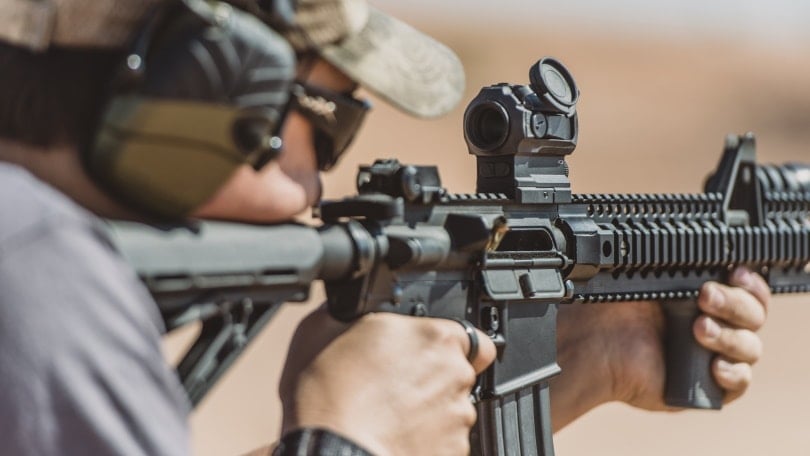Selecting the best reflex sight for your needs is an essential process for anyone involved in shooting sports, hunting, or tactical applications. Reflex sights, known for their speed and accuracy, provide a significant advantage over traditional iron sights. Here we will guide you through the process of choosing the best reflex sight tailored to your specific needs.

Understanding Reflex Sights
Before diving into the selection process, it’s important to understand what reflex sights are and how they differ from other optical sights. Reflex sights project an illuminated reticle (commonly a red dot) onto a lens, which the shooter sees as aligned with the target. Unlike holographic sights, reflex sights do not project an image onto a distant focal plane. Their simplicity leads to a durable, compact design.
1. Determine Your Purpose
The first step in choosing a reflex sight is to clearly define its intended use. Are you a competitive shooter, a hunter, or perhaps using it for home defense or law enforcement? Each application demands different features. For instance, competitive shooters might prioritize fast target acquisition, while hunters may need a more rugged, weather-resistant sight.
2. Reticle Size and Type
The size and type of the reticle are crucial. A larger dot (measured in MOA – Minute of Angle) is easier to acquire quickly but may cover too much of the target at longer ranges. A smaller dot provides precision but can be harder to find in rapid scenarios. Some sights offer variable dot sizes or even different reticle patterns. Consider the distances at which you will be shooting and the size of your typical targets. One popular choice among many shooters is the Holosun Green Dot, known for its versatility and clarity.
3. Optical Quality
High-quality glass and coatings are vital for a clear, bright image. Look for sights with anti-reflective coatings and ensure the sight provides a good level of light transmission. A clear sight picture is especially important in low-light conditions.
4. Durability and Construction
The build quality can greatly impact the lifespan and reliability of your reflex sight. Look for sights made from durable materials like aircraft-grade aluminum. Waterproof, fog-proof, and shock-resistant features are critical for outdoor and rugged use.
5. Battery Life and Power Options
Reflex sights are typically powered by batteries. Consider the battery life and how often you’ll need to replace or recharge the battery. Some modern reflex sights feature solar cells as a supplementary power source or have motion-activated power on features to conserve battery life.
6. Size and Weight
The size and weight of the sight could affect your shooting experience. A bulky sight might throw off the balance of a smaller firearm, while a too-small sight might be less user-friendly on a larger rifle. Match the sight’s size and weight to your firearm and your physical comfort.
7. Compatibility with Your Firearm
Ensure that the sight you choose is compatible with your firearm. Check the mounting options and see if you need additional hardware like a specific rail or adapter.
8. Ease of Use
Consider how user-friendly the sight is. Are the controls easily accessible? Can you quickly adjust the brightness of the reticle? Is it easy to zero? A reflex sight should enhance your shooting experience, not complicate it.
9. Brand Reputation and Warranty
Opt for manufacturers with a good reputation for quality and customer service. A solid warranty can be a significant factor, as it ensures that your investment is protected.
10. Budget
Finally, consider your budget. While you shouldn’t compromise on critical features, there are reflex sights available at various price points. Sometimes, spending a bit more can significantly improve the quality and reliability of the sight.
Conclusion:
Choosing the best reflex sight involves a careful consideration of your specific needs and preferences. By understanding the key features and factors like purpose, reticle size, optical quality, durability, battery life, size, compatibility, ease of use, brand reputation, and budget, you can select a reflex sight that enhances your shooting accuracy and experience. Remember, the best reflex sight is the one that fits your individual requirements and seamlessly integrates with your shooting style.
